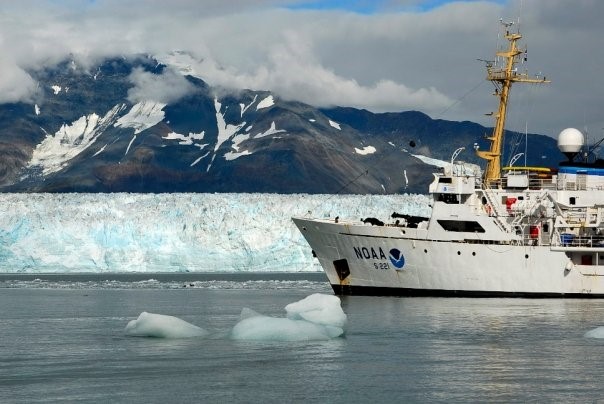U.S. AON
Sustained and integrated observations are critical to understanding how rapid changes in the Arctic will evolve and the risks formulated responses pose to human activity and ecosystems in the region and globally. The United States Arctic Observing Network (U.S. AON) is an initiative to promote sustained and well-defined networks of Arctic observations through collaborative development across U.S. Federal agencies and other partners. These well-defined networks will provide high quality data and expertise in support of scientific understanding, stakeholder needs, and agency operations. The initiative will proceed through developing “U.S. AON Tasks” with measurable outcomes guided by research questions and agency missions. Tasks will benefit mission-critical activities within NOAA such as sea-ice forecasting, but through strategic partnership accrue benefits beyond that as well. Through these tasks, a greater coherence will enable improved information discovery, expert guidance for data product applications, and a clear focus on what is needed for future observing activities. Sustained and focused Arctic research will allow the scientific community and the public to better understand the changes in the Arctic.
Primarily funded by the NOAA Global Ocean Monitoring and Observing’s Arctic Research Program, U.S. AON is built on three types of partnerships: intra-agency, across all five of NOAA’s Line Offices; inter-agency, across U.S. Federal agencies; and on the international level through the Sustained Arctic Observing Network (SAON).
The development of the U.S. Arctic Observing Network initiative originated from the White House Arctic Science Ministerial in September 2016, where over 25 countries and the European Union committed to strengthening and expanding observing capacity in the Arctic. The Ministerial led to the signing of a joint statement for increased international collaboration on Arctic science, and a commitment to include indigenous peoples while studying and responding to changes in the Arctic.
Organizationally, U.S. AON is the “observing cross-cut” of the Interagency Arctic Research Policy Committee (IARPC), which is a Congressionally established committee charged with coordinating all Federal agencies engaged in Arctic research. The U.S. AON will mobilize IARPC’s observing capabilities to support U.S. Arctic research policy.
U.S. AON’s initial work has focused on developing a robust guiding body – the U.S. AON Board – and crafting a shared set of priorities. Agencies active in the U.S. AON Board, chaired by NOAA, include NSF, EPA, NASA, DOI, DOE and ONR. Each agency will take the lead on relevant tasks, developing the core activities of a vital and fully realized Arctic Observing Network. The U.S. AON Executive Director works with the Board to shape these tasks and develop the synergistic partnerships. U.S. AON will optimize existing resources across NOAA and other agencies, such as using existing cyberinfrastructure to develop U.S. AON products through a distributed data network.
A fully developed U.S. AON will promote collaborative use of Arctic research products in order to fully understand the Arctic and Earth system, and to support science applications and key public services.
